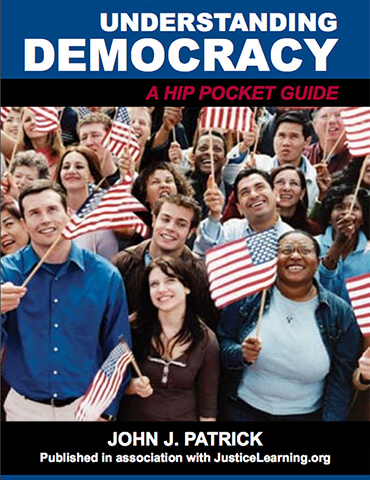The Alliance for Justice describes itself as “a national association of environmental, civil rights, mental health, women’s, children’s and consumer advocacy organizations” that works to “advance the cause of justice for all Americans, strengthen the public interest community’s ability to influence public policy, and foster the next generation of advocates.”
439 resources available
The National Academy of Social Insurance is a nonprofit organization that evaluates economic security programs for people out of work due to disability, unemployment or retirement.
The Employment Policies Institute focuses on labor issues and, especially, the debate over the minimum and living wages.
The Center on Budget and Policy Priorities says in its mission statement that it works “at the federal and state levels on fiscal policy and public programs that affect low- and moderate-income families and individuals.”
The Social Science Research Council is a New York-based “independent not-for-profit research association” that brings the work of academic social scientists to contemporary social problems.
This timeline addresses U.S. Supreme Court cases related to affirmative action.
The nonprofit National Academies — the National Academy of Sciences, the National Research Council, the Institute of Medicine and the National Academy of Engineering — generate and disseminate expert research and judgments on matters of science, including the social sciences. They bill themselves as “advisers to the nation on science, engineering, and medicine.”
The Migration Policy Institute is a nonpartisan think tank that studies international migration.
NumbersUSA describes itself as a “non-partisan, public policy organization that favors an environmentally sustainable and economically just America” or, more succinctly, an “immigration-reduction organization.”
The National Immigration Law Center analyzes proposed immigration legislation and litigates on behalf of immigrants’ rights. The NILC partners with community advocates in states that have high immigrant populations and works to help low-income immigrants get legal, medical and social assistance.
National Immigration Forum is an immigrant rights organization that, according to its website, “advocates and builds public support for public policies that welcome immigrants and refugees and are fair to and supportive of newcomers to our country.”
The Leadership Conference on Civil Rights says it is “the nation’s premier civil rights coalition,” and it has “coordinated the national legislative campaign on behalf of every major civil rights law since 1957.” It was founded in 1950 by A. Philip Randolph of the Brotherhood of Sleeping Car Porters, Roy Wilkins of the NAACP and Arnold Aronson of the National Jewish Community Relations Advisory Council. Today, the LCCR has more than 180 member organizations, including People for the American Way, AARP, the American Civil Liberties Union, the AFL-CIO and constituent unions, the NAACP, National Council of La Raza, the Human Rights Campaign and the National Organization for Women.
The Federation for American Immigration Reform is a nonprofit organization promoting more restrictive immigration laws. FAIR favors improved border security, an end to illegal immigration and restrictions on legal immigration, which means that the legislation it supports is often spearheaded by Republicans and its concerns correlate with conservative causes.
Founded in 1986, the Economic Policy Institute says it aims to broaden the economic policy debate “to include the interests of low- and middle-income workers.”
The Department of Homeland Security was established in 2002 after the Sept. 11 terrorist attacks. The department’s primary responsibilities are to prevent terrorist attacks and to respond to national security threats.
The Center for Immigration Studies, founded in 1985, is a think tank “devoted exclusively to research and policy analysis of the economic, social, demographic, fiscal, and other impacts of immigration on the United States.”
The American Immigration Lawyers Association is a professional organization of more than 10,000 immigration attorneys and legal professors. Its members represent a variety of immigrants, including asylum seekers, entertainment personalities, families that wish to bring relatives to the United States and companies wanting to sponsor foreign workers’ entry to the United States.
The AEI describes itself as dedicated to “limited government, private enterprise, individual liberty and responsibility, vigilant and effective defense and foreign policies, political accountability and open debate.”
The Kaiser Family Foundation, a research-based health care philanthropy, describes its mission as “to inform discussion and debate on major issues that affect millions of people, especially the most vulnerable and disadvantaged, and to elevate the national level of debate on health issues.”
CMS, an agency within the U.S. Department of Health and Human Services, primarily administers Medicare and works in partnership with the states to administer Medicaid, the State Children’s Health Insurance Program (SCHIP) and other programs.
The Centers for Disease Control and Prevention was founded in 1946 to help control malaria and has since become a major player in the public health arena.
The Supreme Court of the United States seems a mysterious, distant institution. Its justices conduct their business in an imposing marble building; they don formal black robes to hear oral arguments and issue decisions; and they announce those decisions through the technical language of the law.
The pivotal Supreme Court cases described in this book remind us that our constitutional system places change and continuity in constant tension. And that is just what the framers of the Constitution intended.
This annotated list provides citations and brief descriptions of important Supreme Court decisions, presented in an A–Z format. Most of the cases are related in some way to the topics and cases treated in the chapters of this book. In addition, this list includes every case—except those already emphasized in the chapters— mentioned in the social studies standards of the state departments of education throughout the United States.
